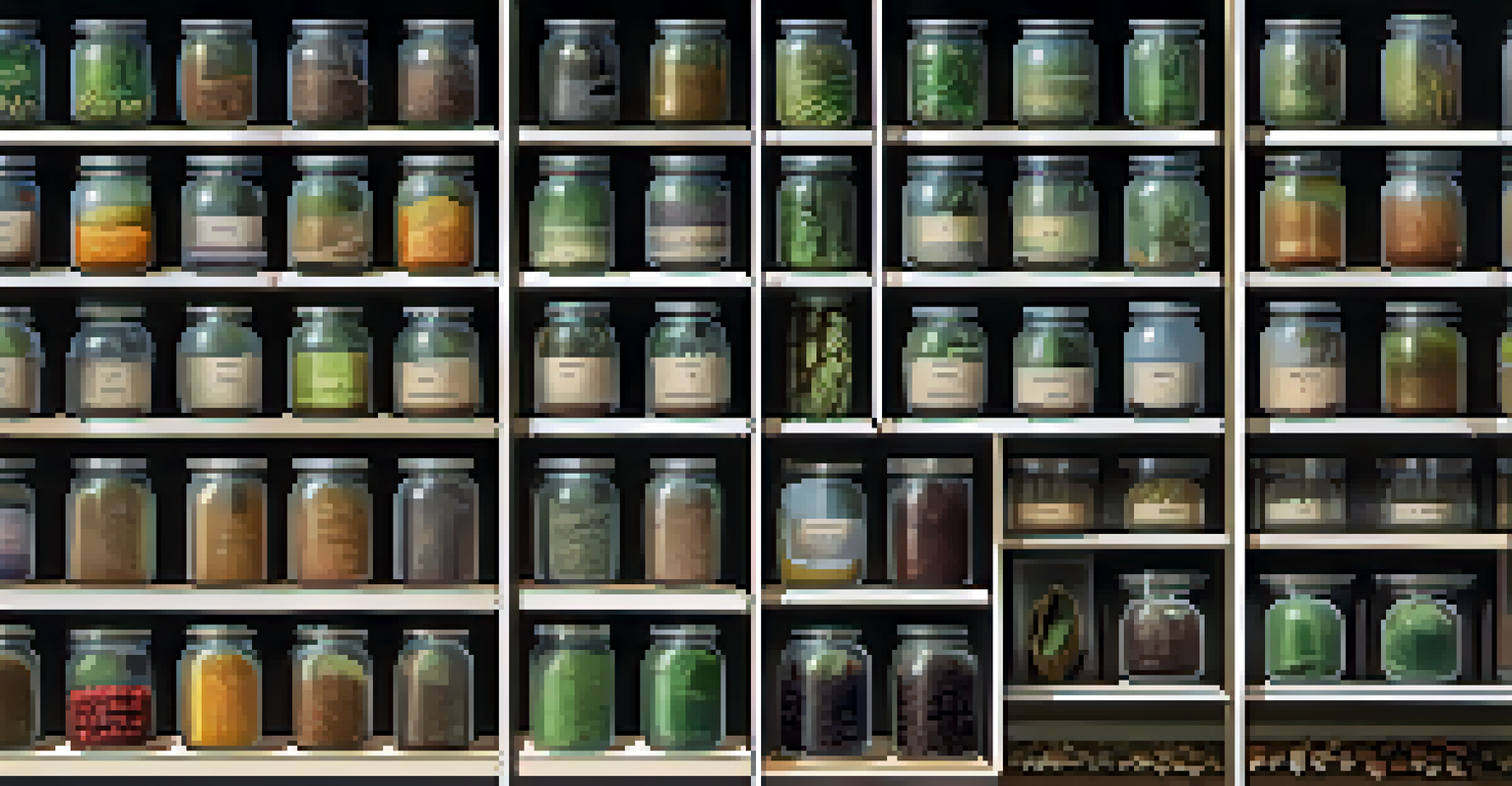Genetic Diversity in Plants: Importance for Breeding Programs

What is Genetic Diversity in Plants and Why Does It Matter?
Genetic diversity refers to the variety of genes within a plant species. This diversity is crucial because it allows plants to adapt to changing environments, resist diseases, and improve crop yields. Without a wide gene pool, plants become more susceptible to challenges, similar to how a team with varied skills can better tackle diverse problems.
The loss of genetic diversity destroys the very foundations of our food security.
For instance, consider a garden with only one type of flower. If a disease affects that flower, the entire garden is at risk. However, a garden with various flowers has a better chance of survival, as some may resist the disease. This concept applies to agriculture, where genetic diversity is essential for food security and sustainability.
In breeding programs, utilizing a diverse range of genetic material can lead to the creation of resilient plant varieties. This ensures that farmers have access to crops that can thrive in different conditions, ultimately supporting global food supply.
The Role of Genetic Diversity in Crop Breeding Programs
Breeding programs aim to enhance desirable traits in plants, such as higher yields or pest resistance. Genetic diversity plays a pivotal role in these programs by providing a broader selection of traits to work with. When breeders have access to a variety of genetic blueprints, they can better select plants that meet specific goals.

Imagine trying to create a new recipe with just a few ingredients. The limited options would restrict creativity and flavor. In contrast, having a pantry full of diverse ingredients opens up endless possibilities. Similarly, a diverse genetic base allows breeders to combine traits in innovative ways, leading to improved plant varieties.
Genetic Diversity Boosts Resilience
A diverse gene pool enables plants to adapt to environmental changes, resist diseases, and improve agricultural yields.
Moreover, genetic diversity can help mitigate the risks associated with climate change. As conditions shift, diverse plant varieties may perform better under stress, ensuring food production remains stable even in uncertain climates.
How Genetic Diversity Improves Disease Resistance
One of the most significant advantages of genetic diversity is enhanced disease resistance. When plants share similar genetic traits, a single disease can wipe out entire crops. By incorporating diverse genetic traits, breeders can develop plants that are more resilient to specific pathogens.
In the long run, genetic diversity is the key to sustainable agriculture.
For example, certain rice varieties possess genes that confer resistance to blast disease, a common rice pathogen. By crossbreeding these resistant varieties with others, breeders can produce new strains that maintain high yields while resisting disease—much like mixing colors to create a more vibrant palette.
This diversity not only protects individual crops but also supports entire ecosystems. A diverse plant population can help maintain balance within agricultural environments, reducing the likelihood of widespread crop failures.
The Connection Between Genetic Diversity and Climate Adaptability
As climate change alters weather patterns, plants must adapt to new conditions. Genetic diversity equips plants with the necessary traits to thrive in varying environments. Breeding programs that focus on diverse genetic pools can produce varieties better suited to withstand droughts, floods, and temperature extremes.
Think of genetic diversity as a toolkit. The more tools you have, the better equipped you are to handle different challenges. Breeders can select for traits that help plants cope with specific climate stresses, ensuring food security in a changing world.
Enhances Crop Breeding Success
Access to various genetic traits allows breeders to create innovative plant varieties that meet specific agricultural goals.
By fostering resilient crops through genetic diversity, we can maintain agricultural productivity and protect natural ecosystems, allowing both plants and humans to thrive together.
Conservation of Genetic Resources and Its Importance
Conserving genetic resources is essential for sustaining agricultural diversity. Gene banks and conservation programs help maintain a repository of plant genetic material that breeders can access. This preservation ensures that valuable traits are not lost and can be utilized in future breeding efforts.
Imagine a library filled with ancient books. Each book holds unique knowledge that could be vital for future generations. Similarly, genetic resources are like a library of potential that breeders can draw upon to create new plant varieties.
By emphasizing conservation, we safeguard the future of agriculture, ensuring that we have the necessary genetic diversity to face unforeseen challenges and continue producing food.
The Impact of Genetic Engineering on Plant Diversity
Genetic engineering has emerged as a powerful tool in modern breeding programs, allowing scientists to introduce specific traits into plants. While this technology can enhance certain characteristics, it's essential to balance it with traditional breeding methods that maintain genetic diversity. Over-reliance on genetically modified organisms (GMOs) can lead to a reduction in genetic variability.
Think of genetic engineering as a precision instrument. It can yield incredible results when used wisely, but if misused, it could narrow the genetic base. Breeding programs should integrate both techniques, leveraging the strengths of each to foster a diverse plant population.
Conservation is Key for Future Food
Preserving genetic resources ensures that valuable traits remain available for future breeding efforts, supporting sustainable agriculture.
Ultimately, maintaining genetic diversity while utilizing genetic engineering can lead to more robust and adaptable crops, benefiting both farmers and consumers.
Future Directions: Embracing Genetic Diversity in Breeding
Looking ahead, embracing genetic diversity will be crucial for the future of plant breeding. Researchers are increasingly acknowledging the value of incorporating diverse genetic traits to develop crops that can thrive in unpredictable conditions. This approach not only enhances food security but also promotes sustainable agricultural practices.
Collaboration among scientists, farmers, and conservationists is essential to ensure that the benefits of genetic diversity are fully realized. Just as a community thrives when diverse voices are heard, agriculture flourishes when diverse genetic materials are utilized.

By prioritizing genetic diversity in breeding programs, we can pave the way for innovation and resilience in our food systems, ultimately creating a sustainable future for generations to come.